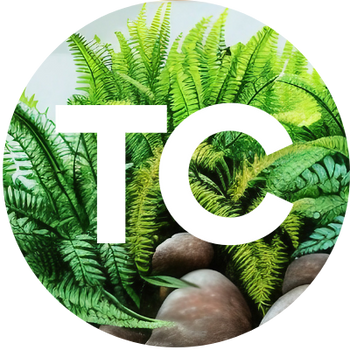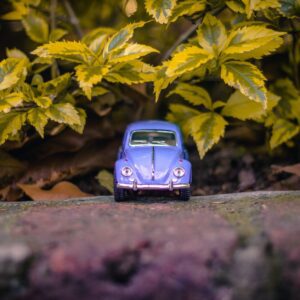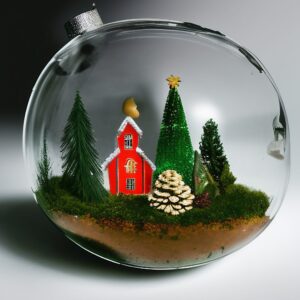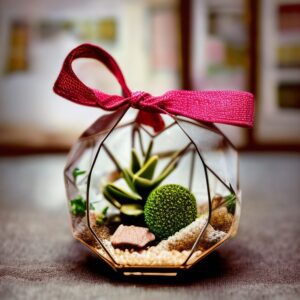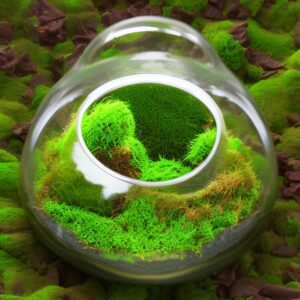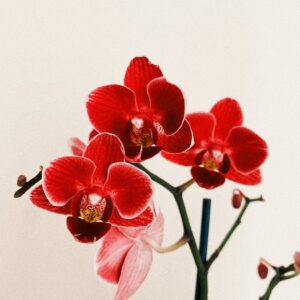Terrarium Building
To build a terrarium, you will need an appropriate-sized container, potting soil, gravel, activated charcoal, and plants. Depending on the size of your terrarium and the type of plants you are using, you may also need stones, moss, and/or decorative items. Check out our Terrarium Building Essentials page.
When choosing a container for your terrarium, there are a few things to consider. First, make sure the size is appropriate for the type of plants you plan to use. Second, the container should be made of a material that is breathable, such as glass or plastic. Lastly, make sure there are drainage holes in the bottom for water to escape. For more info, check out our Terrarium Building Essentials page.
For terrariums it’s best to use a potting soil that is specially formulated for terrariums. This type of soil will allow the plants to get the nutrients they need and retain enough moisture, but not become overly soggy. For more info, check out our Terrarium Building Essentials page.
Activated charcoal is important because it helps keep your terrarium clean and free of odors. It also helps control the moisture levels in terrariums, absorbing excess water and preventing mold growth. For more info, check out our Terrarium Building Essentials page.
No, a terrarium does not need to be completely closed off. However, when moisture is too high, it is important to make sure the lid or top of the container provides enough ventilation so that your plants and other elements inside can receive the necessary air exchange. This will help keep your terrarium healthy and prevent mold from growing. Read more here >
When building and caring for a terrarium, there are several tools that come in handy. A spray bottle is great for evenly distributing water to your plants, while tweezers make it easy to move and reposition small rocks or figurines. A pair of scissors can be used to prune any dead foliage and keep plants looking tidy. Finally, a small brush can be used to dust off any dirt or debris from the walls of your terrarium. These tools will help you keep your terrarium clean, tidy, and looking its best. Read more about essential terrarium supplies here >
Terrarium Plants
When selecting plants for your terrarium, it’s important to select ones that are compatible with each other. Consider the size of your terrarium and the type of environment you’re creating. Most importantly, make sure to choose plants that require similar levels of light, water, humidity, and soil type.
Check out our Terrarium Plant Library for some inspiration!
Popular terrarium plants include tropical varieties such as ferns, air plants, and mosses. Succulents are also popular because they require very little maintenance. Other common plants for terrariums include begonias, orchids, and ivy.
Check out our Terrarium Plant Library for some inspiration!
Some plants are not suited for terrariums because they can outgrow their environment or require too much light and water. For example, it’s best to avoid lavender, and hydrangeas. Additionally, it’s important to avoid invasive species like mint, as they can quickly take over the terrarium. It is best to avoid any type of plant with a very aggressive root system, such as mint or bamboo, as these plants can quickly overtake the entire terrarium. Similarly, some types of cacti or succulents require a much dryer environment than what is provided in a terrarium and therefore should be avoided. Additionally, it’s important to check for any type of local ordinances that may prohibit certain types of plants. Overall, when selecting plants for your terrarium it’s best to do thorough research and pick varieties that fit its specific requirements.
Check out our Terrarium Plant Library for info on plants that are suited to terrarium conditions.
Terrarium Care
The best way to water your terrarium is with a spray bottle. This will help you evenly distribute the moisture and prevent accidentally over- or under-watering your plants. Be sure to check the soil regularly, and if it appears too dry, give it another light misting of water.
For more tips on terrarium care, visit our Terrarium Care Guide page.
You will need to check on your terrarium regularly to make sure everything is healthy and thriving. This includes checking the soil moisture, removing any dead foliage, and keeping things clean. Depending on the type of plants you have, it’s a good idea to fertilize your terrarium every once in a while.
For more tips on terrarium care, visit our Terrarium Care Guide page.
The best way to prevent pests in your terrarium is to only use pest-free plants – check before you plant! Also, avoid introducing any foreign objects that may have been exposed to pests or diseases.
For more tips on terrarium care, visit our Terrarium Care Guide page.
The best way to clean your terrarium is with a damp lint-free cloth and mild non-toxic dish soap. Be sure not to use any harsh chemicals or cleaners, as this can be damaging for both the plants and the environment inside your terrarium.
For more tips on terrarium care, visit our Terrarium Care Guide page.
There are several things you should avoid doing to your terrarium. First, don’t overcrowd your terrarium with too many plants as this can cause it to become unhealthy. Second, avoid using any pesticides or other harsh chemicals inside the terrarium. Finally, be sure not to over- or underwater your plants, as this can cause serious damage.
For more tips on terrarium care, visit our Terrarium Care Guide page.
If your terrarium is fogging up, this likely means there is too much moisture inside. The best way to stop the fogging is to open the lid or container of the terrarium for a few hours each day to allow some of the moisture to escape. You can also use an electric fan pointed towards the terrarium to help reduce condensation. Finally, make sure your terrarium is receiving adequate airflow to prevent the buildup of moisture. By following these steps, you can easily keep your terrarium from fogging up.
For more tips on terrarium care, visit our Terrarium Care Guide page.
To maintain a healthy terrarium, it is important to provide proper lighting, ventilation, and temperature for the plants inside. It’s also essential to make sure you are not over or under watering your plants. Additionally, it is important to have the right soil mixture with enough nutrients for growth but not so much that the plants outgrow the terrarium. Make sure you prune any dead or dying leaves to keep your terrarium looking healthy and vibrant. By following these tips, your terrarium will stay in great condition for many years to come!
For more tips on terrarium care, visit our Terrarium Care Guide page.
If you notice that your plants are wilting, discoloring, or losing leaves, this could be a sign that they are not getting enough light or water. Another indicator of problems in the terrarium is mold growth or an unpleasant odor. Finally, if bugs start to appear in your terrarium, then you may need to take action to get rid of them. If you notice any of these signs, take the necessary steps to ensure that your terrarium remains healthy and thriving.
For more tips on terrarium care, visit our Terrarium Care Guide page.
Terrarium Design
Terrariums can be designed in any style or theme you choose. You could create a desert terrarium with cacti and succulents, or a tropical oasis filled with lush foliage. If you’re looking for something more creative, you could even make a fairy garden full of tiny houses and miniature furniture. Another popular design idea is to make a terrarium that looks like an underwater scene, complete with coral and sea creatures. The possibilities are endless – let your imagination run wild when designing your perfect terrarium! With the right supplies and some creative ideas, you can easily create a beautiful living space for your plants.
Read more about terrarium design on our Terrarium Design Ideas page.
There are many ways to enhance the look of your terrarium, such as adding decorative items like stones or small figurines. You can also add moss or special soils to give it a unique texture and color. Finally, you can use lighting to create a unique atmosphere inside your terrarium. Spotlights and colored lights are great options to create a stunning display.
Read more about terrarium design on our Terrarium Design Ideas page.
There are many decorative items that can be used to enhance the look of your terrarium. Stones, shells, driftwood, figurines and other miniature ornaments are all great options for adding a personal touch to your creation. Just make sure whatever you choose is safe for the environment inside your terrarium.
Read more about terrarium design on our Terrarium Design Ideas page.
Terrarium Lighting
Depending on the type of terrarium you have, different lighting sources will be more effective. For instance, a tropical terrarium should use LED lights that are designed for plants and provide full spectrum illumination. You can also use colored spotlights or other decorative lighting to create a unique atmosphere inside your terrarium. Whichever lighting source you choose, make sure it’s providing enough light for all the plants in your terrarium. With the right lighting, your terrarium will look amazing!
LEDs are an excellent option for terrarium lighting because they provide full spectrum illumination, which is essential for healthy plant growth. LEDs also produce less heat than other lighting sources and can last up to 10 times longer. They are also very energy efficient and cost-effective in the long run. For these reasons, LED lights are a great choice for your terrarium lighting needs.
The amount of light needed for your terrarium plants will depend on the type of plant you have. Generally speaking, tropical terrariums should receive 8-12 hours of light per day. Of course, every situation is different and you may need to adjust the lighting accordingly. Terrarium placement is also a factor, as plants that are placed in a bright location may need less light than those in a dim spot. With the right lighting, your terrarium plants will thrive!
Placing your terrarium in direct sunlight can be damaging to the plants and other living organisms inside. Instead, you should place your terrarium near a bright window or use artificial lighting. This will give your plants the light they need without overexposing them to harsh sunlight.
